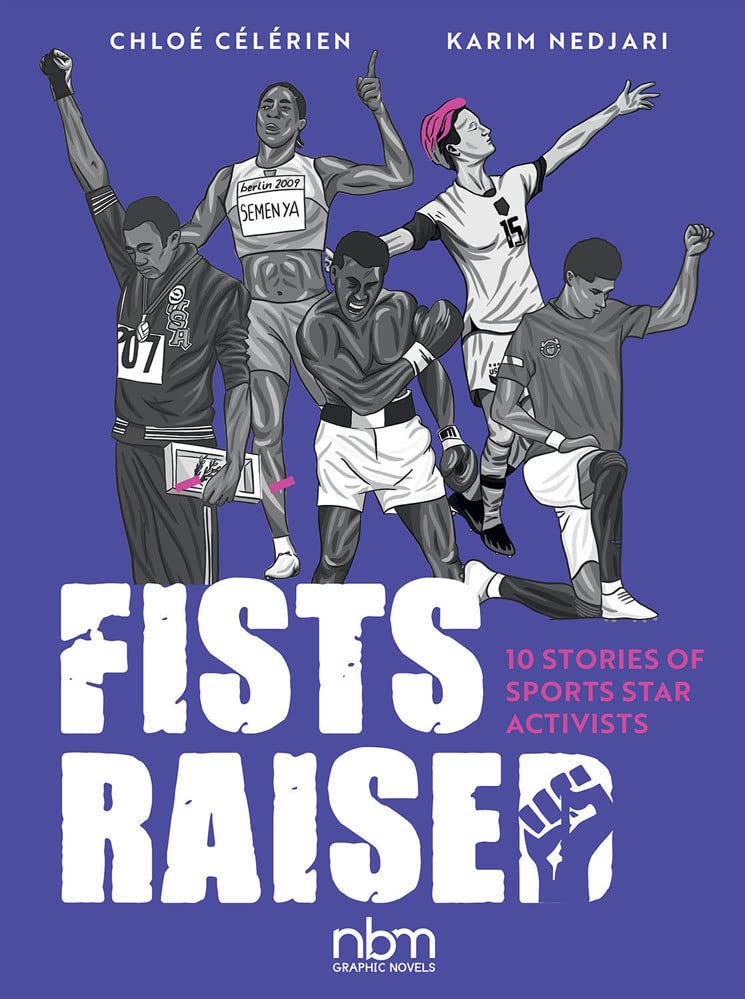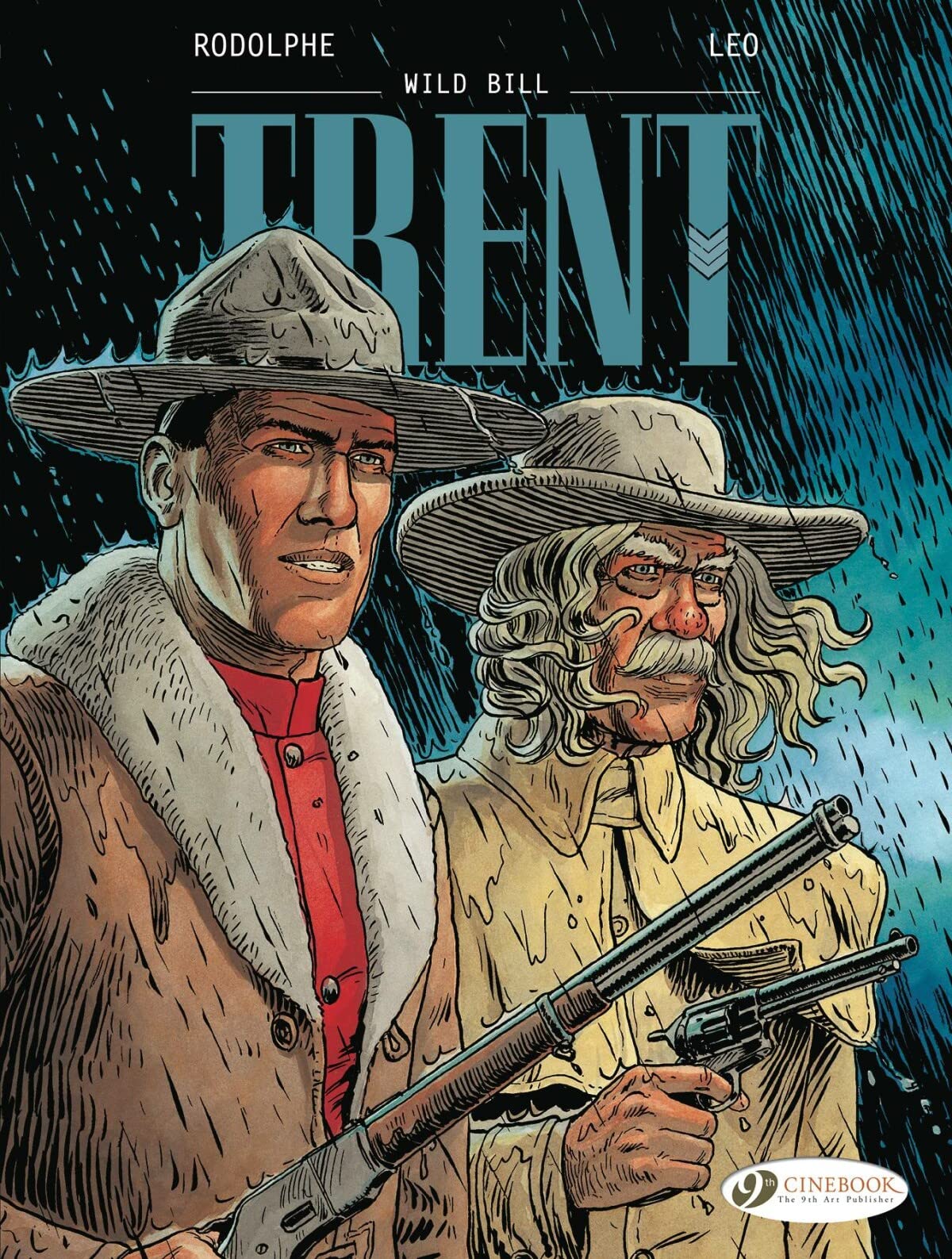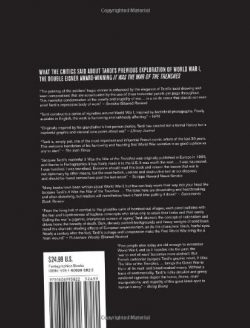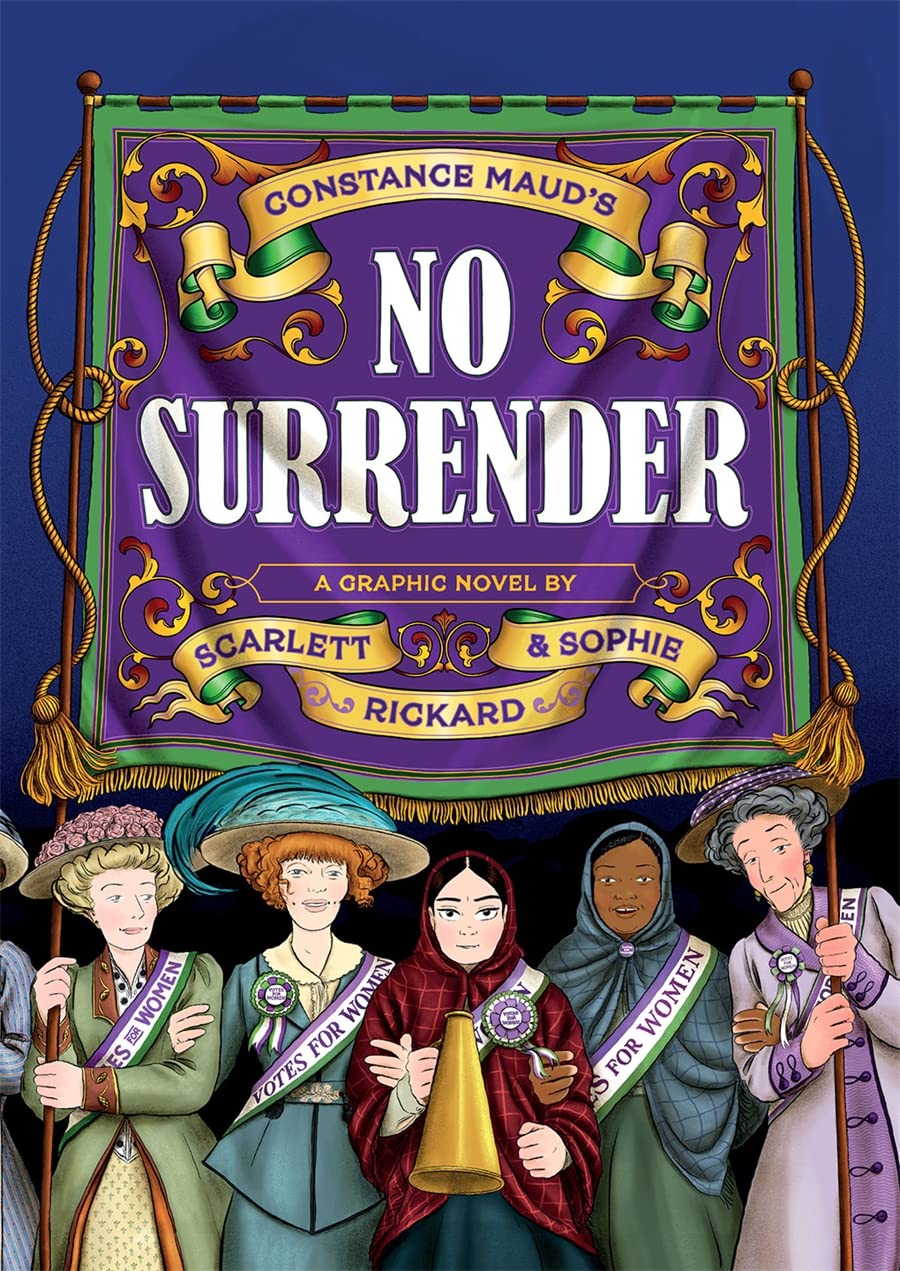
By Chloé Célérien & Karim Nedjari translated by Peter Russella (NBM)
ISBN: 978-1-68112-303-5 (HB) eISBN: 978-1-68112-304-2
Having just recently endured the most nauseating and crass example of sports-washing I can think of – and I’m including the 1936 Berlin Olympics, Moscow 1980 and Los Angeles 1984 in that statement – here’s a wonderful comics counterpoint and riposte, detailing the power of sports to do good.
Sadly – and as seems quite usual now – it’s generally cases of well-meaning individuals working against the advisement and wishes of their own sporting governing bodies and governments. It’s almost as if the people running the show care more about money and power than honour, history, achievement or the fans that pay their wages…
It seems there’s nothing you can’t craft compelling comics about if you’re talented and inspired, as seen in this spellbinding celebration of sports stars weaponising their fame and glory to change the world in ways that truly matter.
Originally released au Continent in 2021 as Générations Poing Levé, quand le sport percute l’histoire, this beguiling and amusingly infuriating book blends history, biography and social commentary thanks to scripter Karim Nedjari (French pundit, journalist and CEO of Radio Monte Carlo and RMC Sport) who teams up with sports-mad cartoonist Chloé Célérien to précis the lives and careers of ten true champions.
These noteworthy stars have all used their celebrity to call out hypocrisy and injustice, fighting to better the lives of the Poor, Disenfranchised, Oppressed or otherwise Othered our rulers choose to ignore or outlaw…
Sports and public competition have always enraptured the masses: eternally viewed as a great and unifying leveller. Even the most lowly and downtrodden can derive joy from playing or participating and, for the impoverished, excellence has always offered a means of escape: a way to turn their talents into a kind of liberty and agency.
It has never, however, been enough to make players into billionaires. Even the greatest can’t make the leap from “player” to “owner”. That takes generational wealth…
Moreover, we haven’t changed much from ancient times. Women are still excluded or simply included on arbitrary male terms and there’s little difference in the status and treatment of a top footballer and a champion racehorse, a boxer or a show dog: ultimately they’re all property of an elite that runs the game and makes – and changes – the rules.
Even so, some modern-day gladiators risking themselves for the benefits granted by cunning commerce and contemporary Caesars may have personal Spartacus moments: telling the powers-that-be when, how, how much and how often they are betraying the people they smugly lord over…
That’s certainly the case in the brief biography of ‘Marcus Rashford – Big Brother to the Poor (1997, soccer, England)’. He’s a young black athlete who translated his astounding footballing triumphs into a very public war of wills with the entire British Government, and especially inept, pitifully attention-addicted prime minister Boris Johnson.
Émigré comedian Henning Wenn summed it up best when he said “We don’t do charity in Germany. We pay taxes. Charity is a failure of Government’s responsibilities…”
A grateful beneficiary of free school meals as a child, Rashford used his elevated public position to school the ruling Conservative party – who had near-unanimously voted AGAINST FEEDING STARVING CHILDREN – in a media campaign that resulted in Johnson repeatedly bowing to the footballer’s gadfly “suggestions”.
In a backward-looking Britain that has adopted the dogma that money is more important than people, the toxic policies of the Tories had never been more powerfully or effectively opposed than in this case of a working-class hero who never forgot where he came from…
‘Muhammad Ali – The Greatest (1942-2016, boxing, United States)’ recalls the career of another icon. Ali was a sporting superstar who evolved into a paragon of black liberation and human equality, and global symbol of power, endurance and dignity.
American prize fighter Cassius Marcellus Clay Jr., found his true name and purpose after years of social othering, where he was readily permitted to entertain millions of Americans, but only to eat, sleep or share space where white people said he could…
Born in Louisville, Kentucky on January 17th 1942, Clay began boxing at age 12. He won titles and acclaim and notoriety, not simply for his incredible sporting achievements but for his quick wit, cultural savvy and moral standing. Gold medal Olympian, World heavyweight champion, critic, pundit and street poet, in 1966 Clay took on the American government and paid a high personal price for refusing to fight a “white man’s war” in Vietnam.
Originally declared 4F due to dyslexia, he was abruptly re-classified and called up after becoming a voice of the Civil Rights Movement. Many still believe he was only drafted to shut him up… a tactic repeated over and over again throughout modern history.
A lifelong equal rights advocate, in 1964, the forceful Conscientious Objector had converted to Islam and formally renounced his “slave name”, adopting new appellation Muhammad Ali.
A living symbol of black pride, Ali retired from boxing in 1981 to concentrate on commercial, social, political and philanthropic works. He was declared Sportsman and Sports Personality of the (20th) Century by Sports Illustrated and the BBC respectively, and died in June 2016 from complications associated with Parkinson’s disease. Like Pelé, he changed the way the world saw colour…
Such was also the case with ‘Surya Bonaly – Black Blades (1973, figure skating, France)’: a black female skater who overcame all odds, broke records and revolutionised her sport, only to be denied its greatest awards and rewards thanks to constant gaslighting and the immovable forces of institutionalised racism. Her fight to correct those injustices for all who followed in her spectacular footsteps comprises the greater part of her entry here.
The same is true for the now largely anonymized icon whose very stance and image gave rise to the concept of sport as symbolic culture weapon.
‘Tommie Smith – The Black Clenched Fist of America (1944, track and field, United States)’ overcame poverty and entrenched bias to win gold at the 1968 Olympics, educating himself to the rank of college professor
His actions particularly outraged closet racist and antisemite and President of the Olympic Committee Avery Brundage (you should look up his sterling record…): a man whose influence tainted sport for generations from his apologist stance at the 1936 “Nazi Olympics” all the way through to the terrorist-blighted 1972 Munich games. He’s worthy of his entry if not book, but it wouldn’t be very complimentary…
How Tommie Smith willingly surrendered everything to make the political statement he believed more important than his own future, and how not just he and black teammate John Carlos (bronze medallist) but also white Australian silver medallist Peter Norman (who contributed a crucial twist to the Raised Fist incident) were punished for the visual statement is something every sports lover should be ashamed of and outraged by…
This chapter also carefully deconstructs the events and planning leading to that moment and the carefully conceived symbolic assault on the Establishment. Here we see Smith enduring decades of FBI surveillance in the aftermath. Moreover, he was designated one of ten athletes considered “a threat to America”, but ended on a triumphal high as the man who inspired Colin Kaepernick’s latterday protest, the Black Lives Matter movement and the career of Barack Obama finally received the acclaim he deserved…
Just as ingrained and unassailable was the attitude to women in sport and ‘Megan Rapinoe – An American Feminist (1985, soccer, United States)’ traces a painfully similar and oft-rerun path. Rapinoe was born to a poor white staunchly Republican family, and endured a different kind of bigotry. She and her siblings employed sport – or petty crime – to escape their stifling social problems, but Megan’s unique triumphs in soccer made her a global icon.
World Cup winner, Gold-winning Olympian, openly gay and a media megastar, she used her fame to champion pay inequality in US sport and constantly battled racial, sexual and gender bias. She was the first sports professional to support and emulate Colin Kaepernick’s stance and gesture, and proudly basked in the wrath of one-time President Donald Trump: constantly doubling down in a personal campaign to “smash the Patriarchy”, against the express wishes of much of her family. She too was celebrated and encouraged by more rational American Presidents and continues her forthright war on repressive conservatism…
‘Caster Semenya – The Woman Who Ran Too Fast (1991, track and field, South Africa)’ relates the shameful treatment of an African Olympian whose actual biology was considered aberrant and unwelcome. Targeted by (some) fellow competitors as well as international sporting authorities, the World Champion runner’s achievements and gender were constantly and repeatedly questioned. She was accused of being a man unfairly competing against women, and that man Brundage had plenty of unpleasant, unhelpful things to say on this issue too…
Her struggle for personal validation encompassed and overcame many official attempts to reclassify the sporting definitions of gender, and her later life has been dedicated to championing the rights of intersex women across the world…
‘Arthur Ashe – Humanitarian Aces (1943-1993, tennis, United States)’ was a world-shaking trailblazer who broke a monopoly. As seen above, sporting success has always been the only real weapon poor people have in a world tailored to accommodate the wealthy – usually white – and their offspring. A descendent of slaves, second class Virginian citizen Ashe shattered an age-old State colour bar preventing “his kind” playing tennis against white players. He fought hard and progressed, going on to become a global superstar: the first black man on UCLA’s team, first to play on the USA’s International (Davis Cup) team and first to win a prestigious Wimbledon tournament (where he controversially raised a Tommie Smith style fist after beating ferocious rival and Great White Hope Jimmy Connors).
Ashe was also a self-educated intellectual, a pacifist, a fashion icon and born social warrior who happily made waves. He too was classified as fodder for Vietnam, but his brother – a veteran – volunteered to take his place, leaving Arthur to continue his campaigns against injustice and intolerance, such as his early opposition to Apartheid in South Africa.
The crusader seemed born under an unlucky star: his sporting career ended early after a massive heart attack, and he survived quadruple bypass surgery to become a tennis coach who numbered John McEnroe amongst his protégés. His influence inspired many players of colour, from Yanick Noah to Venus and Serena Williams …
A second heart attack led to an agonisingly slow decline and dictated the course of his last crusade. Blood used during another heart operation had been contaminated with HIV and infected Ashe with AIDS. Diagnosed in 1988 with the mystery disease then decimating gay and black communities – and whilst writing a definitive history of black sportsmen and women in America – Ashe became the spokesman for AIDS sufferers everywhere after blackmailers threatened to expose his condition.
Instead, he went public, frustrating the criminals, demystifying the modern bête noir and becoming a UN consultant on HIV/AIDS until his death in February 1993. He lived long enough to see Apartheid end and meet his idol Nelson Mandela…
An unending fight for personal freedom and autonomy follows in the history of ‘Nadia Comaneci – The Dictator’s Doll (1961, gymnastics, Romania)’. Raised in the Soviet satrapy of Romania, determined sportswoman and legendary Olympic gymnast Comaneci fell under the absolute control of monstrous dictators and deranged personality cultists Nicolae and Elena Ceau?escu. Henceforth, her astounding accomplishments (first ever to achieve maximum possible scores and youngest athlete to win gold) became just like her pay, awards and prizes: property of the State as manifested in Mrs & Mrs Ceau?escu – whose many insane edicts included classifying sex education as a state secret and establishing Menstruation Police to enforce a population boom the bankrupt nation could not support…
Nadia’s abuse, struggle, flight to freedom in the West and subsequent bondage to a coercive controller is the stuff of nightmares and her eventual triumph and loving later life an utter cathartic joy.
Even for a nation that has produced many messianic footballers ‘Sócrates – Half Plato, Half Pelé (1954-2011, football, Brazil)’ is a remarkable figure. Another poor, talented and self-educated soccer star drawn from the underclasses, his struggles against addiction (“beer, cigarettes and women”) and the toxic allure of celebrity fed a fierce desire to be the best, but never affected his aims to help the people through socialism, medicine and ultimately political power. His early death might have robbed the world of a force for change, but his admirers’ and followers’ successful struggles against the Right – as manifested in dictatorial President Jair Bolsonaro – prove that his legacy ranges far beyond his sporting miracles…
Ending this potent exploration of individual achievement lifting all boats is the inspirational story of ‘Hiyori Kon – Little Miss Sumo (1997, sumo wrestling, Japan)’.
A resolute Japanese girl of lowly origin, she was early besotted by the national sport and battled two millennia of entrenched chauvinism and anti-female prejudice in a paradoxically forward-looking but hidebound society where many male and female roles are backed up by draconian laws and ironclad cultural conditioning. Even today Japan is one of the most gender-restricted societies on Earth (ranked 121st of 153 in terms of gender inequality by the World Economic Forum). The very term “feminism” equates with “hate” and “hysteria”…
Hiyori’s battles to compete as a female sumo wrestler were the stuff of legend, taking her across the country and the world as both competitor and coach for a sport growing evermore popular amongst women everywhere but in its nation of origin.
She has won medals everywhere but Japan, where the National Olympic governing body actually excluded the sport/discipline from their own (Covid-delayed) 2021 games because all events in any Olympiad must be open to male and female competitors…
Nevertheless, as part of a growing, inexorable tide of resolute women working for change, Hiyori has started a wave of reform and her crusade continues to this day…
These days a seemingly infinite variety of subjects fit under the umbrella of modern graphic novels – everything from superheroes, sci fi and the supernatural to philosophy, journalism and education. Thanks to their global reach and outlook, NBM are at the forefront of this welcome revolution, bringing a range of visions to the English-speaking table that apparently daunt most mainstream publishers here and in America.
Today’s book is a perfect case in point: a sequence of visual adaptations of some of the world’s most celebrated role models, chosen not only for their scintillating accomplishments but also the force of their convictions. The result is an utterly enticing graphic treasure, and there’s not a single tragic supervillain in sight… unless you count assorted governments, individual politicians, scurrilous administrators and business owners…
NBM’s library of graphic biographies are swiftly becoming the crucial guide to the key figures of modern history and popular culture. If you haven’t found the answers you’re seeking yet, then you’re clearly not looking in the right place…
© Hatchette Livre (Marabout) 2021. © 2022 NBM for the English translation. All rights reserved.
Fists Raised – 10 Stories of Sports Star Activism will be released on January 12th 2023 and can be pre-ordered now in both print and digital editions.
Most NBM books are also available in digital formats. For more information and other great reads see http://www.nbmpub.com/


















